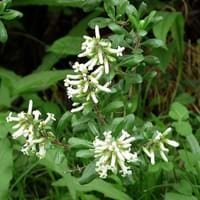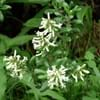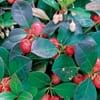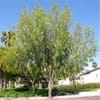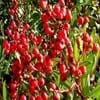Life Span
Perennial
Annual and Perennial
Type
Broadleaf Evergreen
Bulb or Corm or Tuber
Origin
Hybrid origin
Central America, South America
Types
Not available
Vine, Flowering plant
Number of Varieties
Not Available
Habitat
Mountain Slopes
All sorts of environments, Along Railroads, Banks, Moist Ditches, Roadsides, rocky banks of streams
USDA Hardiness Zone
7-9
10-13
AHS Heat Zone
Not Available
12-1
Habit
Upright/Erect
Vining/Climbing
Minimum Width
Not Available
Flower Color
White, Pink
Purple, Rose
Flower Color Modifier
Bicolor
Bicolor
Fruit Color
Not Available
Not Available
Leaf Color in Spring
Dark Green
Purple, Dark Green, Black
Leaf Color in Summer
Dark Green
Light Green
Leaf Color in Fall
Dark Green
Several shades of Green
Leaf Color in Winter
Dark Green
Light Green
Leaf Shape
Irregular
Acicular
Plant Season
Spring, Summer, Fall, Winter
Spring, Summer, Fall, Winter
Sunlight
Full Sun, Partial Sun
Full Sun, Partial Sun
Growth Rate
Medium
Very Fast
Type of Soil
Loam, Sand
Clay, Loam, Sand
The pH of Soil
Acidic, Neutral, Alkaline
Acidic, Neutral, Alkaline
Soil Drainage
Well drained
Well drained
Bloom Time
Summer
Late Spring, Early Summer, Summer, Late Summer, Early Fall, Fall, Late Fall
Tolerances
Drought
Drought
Where to Plant?
Ground
Container, Ground
How to Plant?
Seedlings
Cuttings, Leaf Cutting, Tuber propagation
Plant Maintenance
Medium
Medium
Watering Requirements
Average Water Needs
Keep the Soil well drained, Needs very little water
In Summer
Lots of watering
Lots of watering
In Spring
Moderate
Moderate
In Winter
Average Water
Average Water
Soil pH
Acidic, Neutral, Alkaline
Acidic, Neutral, Alkaline
Soil Type
Loam, Sand
Clay, Loam, Sand
Soil Drainage Capacity
Well drained
Well drained
Sun Exposure
Full Sun, Partial Sun
Full Sun, Partial Sun
Pruning
Remove damaged leaves, Remove dead branches, Remove dead flowers, Remove dead leaves
Remove damaged leaves, Remove dead branches, Remove dead leaves
Fertilizers
All-Purpose Liquid Fertilizer
All-Purpose Liquid Fertilizer
Pests and Diseases
Fungal leaf spots
Red blotch
Plant Tolerance
Drought
Drought
Flower Petal Number
Single
Single
Foliage Texture
Medium
Coarse
Foliage Sheen
Glossy
Matte
Attracts
Bees, Birds, Butterflies
Aphids, Beetles, Cutworms, Insects, Mites, Whiteflies
Allergy
Not Available
Abdominal pain, allergic reaction, Nausea, Skin rash, Twitching of face
Aesthetic Uses
Beautification, Cottage Garden, Showy Purposes
Not Used For Aesthetic Purpose
Beauty Benefits
Not Available
Not Available
Environmental Uses
Air purification
Air purification
Medicinal Uses
Not Available
Cures constipation, Fiber, Low calories, lowering blood pressure, Potassium, ß-carotene, Vitamin A, Vitamin C
Part of Plant Used
Flowers, Leaves
Leaves, Root, Shoots, Stem, Tuber
Other Uses
Basketary, Used as firewood, Wood is used fore making tools
Starch, Used As Food, Used as Ornamental plant
Used As Indoor Plant
No
Sometimes
Used As Outdoor Plant
Yes
Yes
Garden Design
Foundation, Hedges, Mixed Border, Screening, Wind Break, Topiary, Bonsai, Espalier
Container, Edible, Groundcover, Hanging Basket, Herb / Vegetable, Mixed Border, Rock Garden / Wall, Vine
Botanical Name
Escallonia resinosa
IPOMOEA batatas 'Blackie'
Common Name
Escallonia
Blackie Sweet Potato Vine, Sweet Potato Vine
In German
Gummi
Süßkartoffel
In French
gomme
Patate douce
In Spanish
goma
Ipomoea batatas
In Greek
κόμμι
Sweet potato
In Portuguese
goma
Batata-doce
In Polish
guma
Wilec ziemniaczany
In Latin
Euonymus
Ipomoea batatas
Phylum
Magnoliophyta
Tracheophyta
Class
Magnoliopsida
Magnoliopsida
Order
Escalloniales
Solanales
Family
Grossulariaceae
Convolvulaceae
Clade
Angiosperms, Asterids, Eudicots
Angiosperms, Asterids, Eudicots
Tribe
Not Available
Not Available
Subfamily
Escallonioideae
Not Available
Number of Species
Not Available
Season and Care of Escallonia and Sweet Potato Vine
Season and care of Escallonia and Sweet Potato Vine is important to know. While considering everything about Escallonia and Sweet Potato Vine Care, growing season is an essential factor. Escallonia season is Spring, Summer, Fall and Winter and Sweet Potato Vine season is Spring, Summer, Fall and Winter. The type of soil for Escallonia is Loam, Sand and for Sweet Potato Vine is Clay, Loam, Sand while the PH of soil for Escallonia is Acidic, Neutral, Alkaline and for Sweet Potato Vine is Acidic, Neutral, Alkaline.
Escallonia and Sweet Potato Vine Physical Information
Escallonia and Sweet Potato Vine physical information is very important for comparison. Escallonia height is 150.00 cm and width 180.00 cm whereas Sweet Potato Vine height is 15.00 cm and width Not Available. The color specification of Escallonia and Sweet Potato Vine are as follows:
Escallonia flower color: White and Pink
Escallonia leaf color: Dark Green
Sweet Potato Vine flower color: Purple and Rose
- Sweet Potato Vine leaf color: Purple, Dark Green and Black
Care of Escallonia and Sweet Potato Vine
Care of Escallonia and Sweet Potato Vine include pruning, fertilizers, watering etc. Escallonia pruning is done Remove damaged leaves, Remove dead branches, Remove dead flowers and Remove dead leaves and Sweet Potato Vine pruning is done Remove damaged leaves, Remove dead branches and Remove dead leaves. In summer Escallonia needs Lots of watering and in winter, it needs Average Water. Whereas, in summer Sweet Potato Vine needs Lots of watering and in winter, it needs Average Water.
